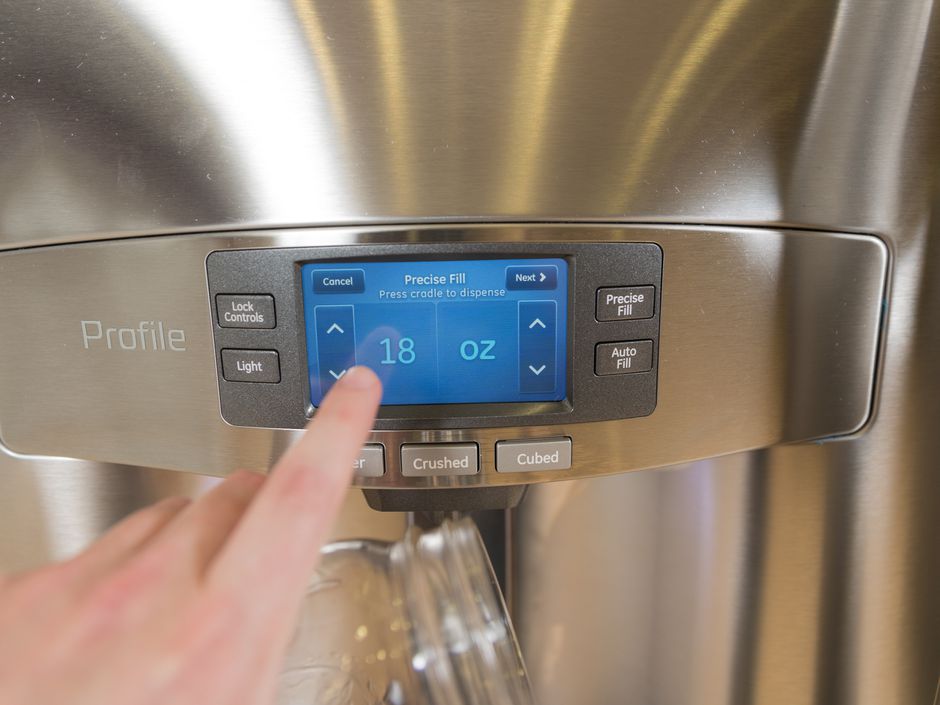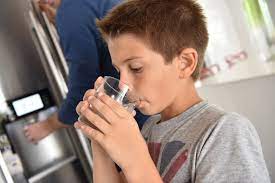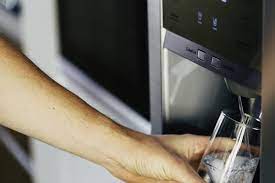Why isn't The Water Dispenser on My Refrigerator Working?

You probably don’t give your water dispenser much thought until something goes wrong. Nothing comes out when you press your glass against the switch. Or, in the worst-case scenario, the water just keeps running and won’t stop. What exactly is going on?
Refrigerator water dispensers include many moving parts, and if one of them breaks or gets clogged, the water will either stop flowing or stop coming out. Common reasons are frozen supply tubes, blocked water filters, malfunctioning inlet valves, damaged dispenser switches, and faulty control boards.
Rule out two obvious possibilities: an open door and low water pressure to figure out what’s wrong.
Many water dispensers will not work if the refrigerator or freezer door is open. Check to see if anything is blocking the doors from closing completely.
Then, turn on the sink faucet to determine if you have enough water pressure throughout your home. Water pressure is required for a water dispenser to function properly, and you want to be sure it isn’t a system-wide issue.
Problems with the Water Dispenser in the Refrigerator

Let’s start with issues that might prohibit water from coming out of the dispenser.
Water flow can be obstructed by a frozen supply tube. The water distributing mechanism is positioned next to the ice maker in the freezer door. As a result, the water supply tube might quickly freeze, blocking it and preventing water from flowing freely.
Insert a frozen plastic zip tie into the tube to see if the problem is an ice clog. If it comes to a halt before reaching the end, your supply tubing is clogged with ice.
A frozen supply line can be thawed using a variety of methods. Simply unplug or turn off your refrigerator until the tube thaws, which may take several hours.
Some folks recommend warming up the tube and thawing the clogged ice using a hairdryer. Don’t set the hairdryer down or leave it unattended; you’ll need to guide it toward the tube by hand for the entire 15-minute period it takes to melt the ice.
Alternatively, you can buy a frozen water line tool that looks like a needleless syringe on the end of a flexible tube for approximately $10. With this gadget, you may defrost the ice by squirting warm water directly into your supply tube.
A faulty inlet valve could be if a frozen water tube isn’t the issue. This valve controls the water supply to your water dispenser and icemaker.
It can prevent water from flowing to your water dispenser if it is stuck closed. If it becomes caught open, though, the water will continue to flow, and you will have a mess on your hands.
You can change the valve yourself using simple tools like a screwdriver and a wrench. Most refrigerators have a valve at the bottom and rear, so you’ll have to remove the fridge out to get to it. Before you do anything, unplug the refrigerator and turn off the water supply.
There are various inlet valves, so consult your refrigerator’s handbook to determine the size and type of valve you need.
A clogged water filter is another possibility. You can remove the water filter and clean it by soaking and rinsing it, but it may be more convenient to simply purchase a new one because the filter should be updated every six months.
A broken switch is a less prevalent cause of the problem. Press your glass or water bottle against a plastic flap or surface to start the water flowing in most refrigerators. This pressure operates a switch that switches on and off the water.
You can replace the switch on most refrigerator models by purchasing a new one. The switch mechanism must be located by prying off the dispenser’s plastic face. After that, connect the new switch.
Finally, a faulty control board could be to blame for your water dispenser’s malfunction. The control board is an electronic board that controls the water dispenser and ice maker’s functionality. It is feasible to replace it, but the process is more difficult.
How Much Does a Refrigerator Water Dispenser Repair Cost?
After you’ve found the problem, you might be wondering whether it’s worth it to fix it yourself or hire a professional. Several things will influence this decision.
The majority of replacement parts for a refrigerator’s water dispenser are under $100, while a control board can cost up to $400 depending on the model and manufacture of your refrigerator. You might be able to repair yourself if you’re handy, but if you need to call a repair agency, expect to pay around $200 for a service call plus an hourly rate.
The exact costs vary depending on the refrigerator’s make and model, area living costs, where you buy it, and so on, but below are some standard pricing for replacement parts.
- Frozen water tube tool: $10-$15
- Inlet valve: $30-$80
- Water filter: $30-$50
- Water dispenser switch: $10-$30
- Control board: $100-$300
To get the right component, you’ll need to know the specific name of your refrigerator’s model and make, as well as the model number and, in certain cases, the part number. The model number of your refrigerator can be found on a label on the inside of the refrigerator.
You might be able to locate your user manual online if you no longer have it.
What Is the Purpose of Water Dispensers in Refrigerators?

It’s worth noting that not all refrigerators have water dispensers, but those that do usually have an ice dispenser as well. That’s because the two are inextricably linked.
The introduction of ice makers and through-the-door distribution of ice cubes led to water dispensers in consumer refrigerators. Since the 1950s, refrigerators have had icemakers, and the first through-the-door dispenser debuted in 1965. Because built-in ice makers require a freshwater supply, ice-cold water might also be dispensed through the door.
The water source for the water dispenser and the ice maker is the same. The refrigerator must be connected to a water line coming from the wall or floor when it is installed. The water valve on the rear of your fridge is then connected to a 1/4-inch flexible line.
Refrigerator manufacturers found it simple to include a water dispenser because water is already present in the refrigerator for the icemaker.
John Gorrie designed the first ice making machine in 1851, and his design was improved upon during the early 1900s. Jurgen Hans built the first ice machine to produce edible ice in 1929.
Commercial ice makers were in operation for decades before consumer machines were created in the 1950s. The early built-in ice makers were contained within the refrigerator’s freezer section, and ice was removed from the bin with your hands or a scoop.
Frigidaire introduced the first refrigerator with an ice dispenser built into the door in 1965, but the concept took another two decades to catch on. Water dispensers originally became popular in the 1980s, about the same time when side-by-side variants were becoming popular. The side-by-greater side’s freezer compartment made room for the ice maker/water dispenser combination.
Water and ice dispensers were introduced in French door freezers when they became popular in the late 1990s. The dispensers, however, are situated in the refrigerator section’s door rather than the freezer section due to the design.
Because of the intricate construction, ice makers in French door freezers have a higher failure rate than in other varieties. On the other hand, water dispensers are not more prone to malfunction.











